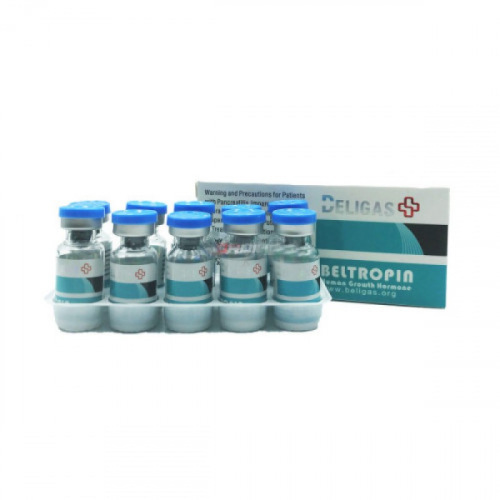ACTIVE HALF-LIFE
2.5-3 hours
CLASSIFICATION
Peptide Hormone
DOSAGE
Men 4-10 IU/day
ACNE
No
WATER RETENTION
No
HBR
No
HEPATOTOXICITY
No
AROMATIZATION
No
MANUFACTURER
Beligas - US
WAREHOUSE
USA Warehouse 2
SUBSTANCE
Somatropine - 191 Amino Acid
,
Human Growth Hormone (HGH), also referred to as somatotropin or somatropin, is a peptide hormone that promotes growth, as well as cellular reproduction and regeneration in humans and other species. It acts as a mitogen, targeting specific types of cells. HGH is composed of a single-chain polypeptide made up of 191 amino acids and is produced, stored, and secreted by somatotropic cells located in the lateral wings of the anterior pituitary gland. The release of Human Growth Hormone is influenced by various factors, including diet and physical activity.
HGH encourages body cells to not only grow in size but also to divide at an accelerated rate. Furthermore, it facilitates the transport of amino acids across cell membranes and increases the efficiency with which these cells convert these amino acids into proteins. This leads to an anabolic effect in the body, promoting muscle growth. HGH also causes cells to reduce their typical carbohydrate usage while boosting their fat utilization. Research has indicated that fat loss and lean mass gains can be achieved with doses as low as 0.028 iu/kg daily over a span of 24 weeks. Additionally, HGH stimulates the production of IGF-1.
In the medical field, HGH is utilized to address growth disorders in children and deficiencies in adult growth hormone. Reliable studies have shown several advantages associated with adjusting HGH levels, which include:
Additionally, various studies, particularly those involving individuals with HGH deficiency, suggest that HGH plays a significant role in both mental health and energy levels. Adults with HGH deficiency often experience higher rates of depression compared to those with normal levels.
There has also been research on HGH concerning cognitive abilities, such as learning and memory. HGH appears to enhance cognitive functioning in humans and may be beneficial for treating cognitive impairments associated with HGH deficiency.
As an anabolic substance, HGH has been misused by athletes since at least 1982. While it can facilitate impressive gains in muscle mass, it is less effective for building strength. Competitors in the late '70s and early '80s began to showcase a more defined, sculpted physique, reminiscent of classical statues, without necessarily increasing their cardio or protein intake significantly.
HGH tends to yield greater benefits when used in conjunction with a steroid cycle compared to on its own. Therefore, it is typically deemed appropriate for cutting cycles aimed at achieving lean muscle and fat loss.

